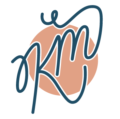In Part 2 of this three-part series we continue to explore differentiating instruction (content, process and product) for on-target learners. Part 2 offers suggestions for process differentiation for on-target learners.
To recap from Part 1: On-target learners comprehend concepts rapidly and display a solid mastery of the subject matter. They thrive in a traditional classroom setup, and teachers generally don’t encounter challenges with their classroom behavior. Despite performing decently in school, these students may not necessarily shine, and they might even escape the teacher’s attention. Typically, educators don’t find it necessary to adapt their teaching methods for this particular group.
Process differentiation as ‘sense-making’
Process differentiation is the tailoring of instructional methods and approaches to accommodate the diverse learning needs and styles of students. Similarly to content differentiation, it is a good idea to start by considering student readiness, interest, and learning preference (Tomlinson, 2017).
Tomlinson (2017) used the phrase ‘sense-making activities’ to describe process differentiation. This phrase is great because it can include any effective activity that is designed to help a student progress from their current understanding to a more complex level. Effective teachers design classroom activities that seamlessly guide students in processing and comprehending ideas. It starts with making activities captivating, capturing students’ interest and sparking their curiosity. Then, there’s the challenge of elevating thinking to new heights, prompting students to engage in high-level cognitive processes. Finally, it’s about weaving in key knowledge, skills, and understandings (KUDs) into the fabric of learning, helping students not just memorize but truly grasp the interconnectedness of these vital elements (Tomlinson, 2017).
Flexible process differentiation strategies
Navigating sense-making activities while concurrently advancing the entire class, presents a challenge within the context of whole-class instruction. Teachers must consider using flexible grouping techniques, small group and/or individual assignments to facilitate process differentiation. Below are some examples from Tomlinson (2017) for differentiating based on student readiness, interest and learning preference:
| Readiness | Interest | Learning preference |
| Peer partners/peer tutoring | Anchor activities aligned with students’ interest | Analytical, creative or practical prompts |
| Learning contracts | Independent studies | Collaborative learning options |
| Personalized formative feedback | Interactive journals | Competitive learning options |
| Tiered assignments | Jigsaw | Manipulatives and models |
| Think-pair-share | Makerspaces | RAFT assignments |
Conclusion
As we conclude this exploration of process differentiation, it’s clear that offering personalized learning experiences for learners-in-the-middle is essential if we want to continue to signal to them that they are special. By embracing the varied learning styles, interests, and readiness levels of our on-target learners, through process differentiation we might just provide that nudge they need to recognize their potential!
Stay tuned for Part 3 on product differentiation for learners-in-the-middle!
Reference:
Tomlinson, C. A. (2017). How to Differentiate Instruction in Academically Diverse Classrooms (3rd ed.). Association of Supervision and Curriculum Development (ASCD).
Engage KM Educational Consulting for your professional development and instructional coaching needs!
Let us plan your professional development for one year or more to help you meet your school’s academic goal! We will custom-design your faculty workshops to engage and inspire teachers with innovative approaches and practical resources. We will coach individual teachers on instructional methods and technology integration to enhance student engagement.

